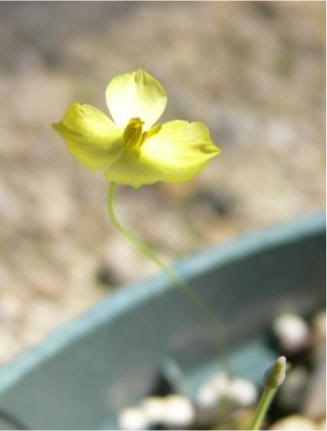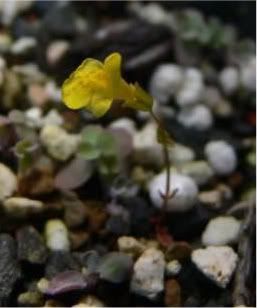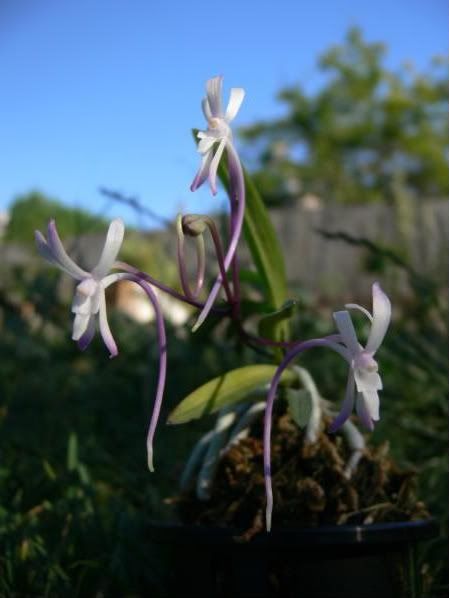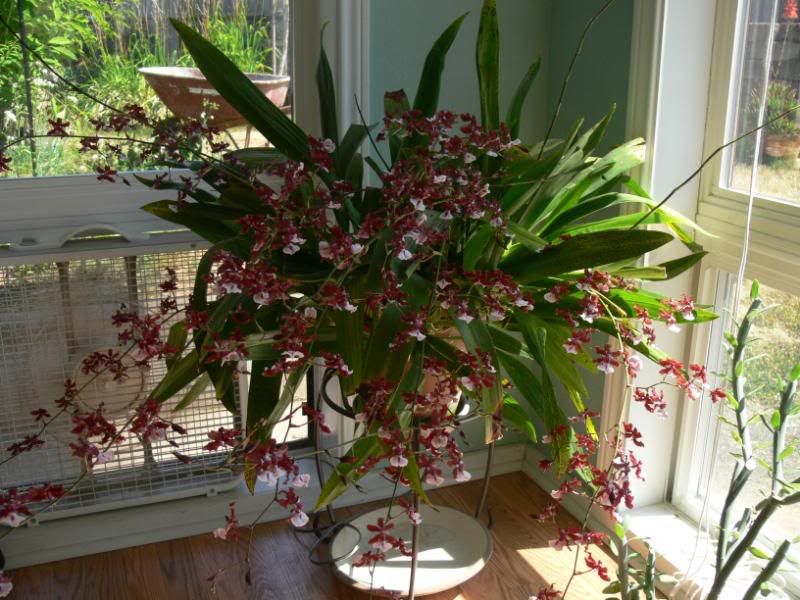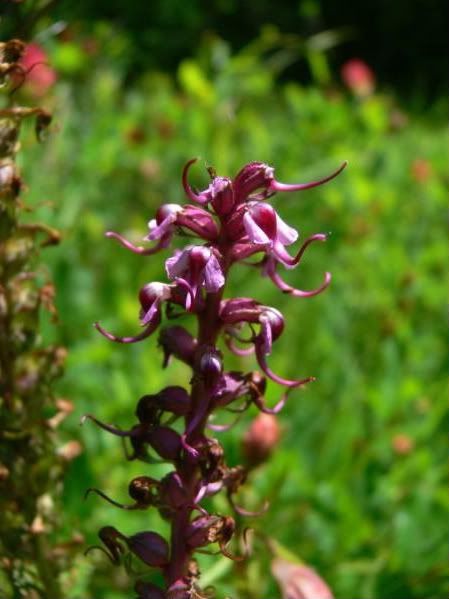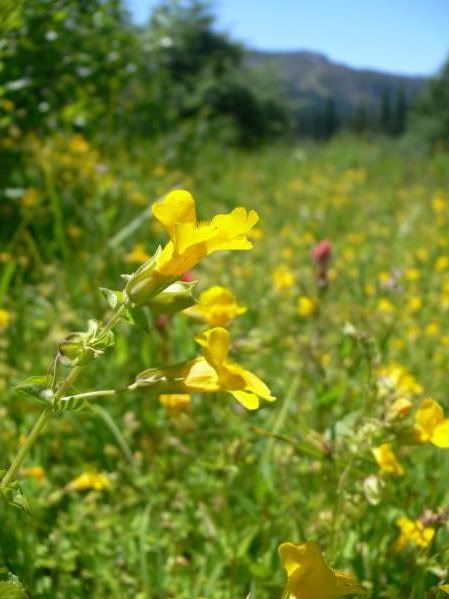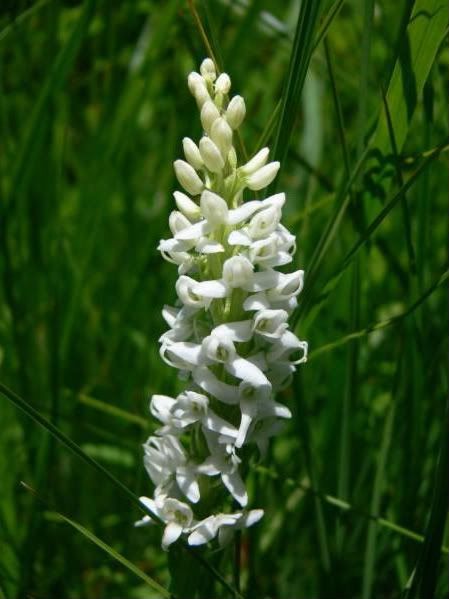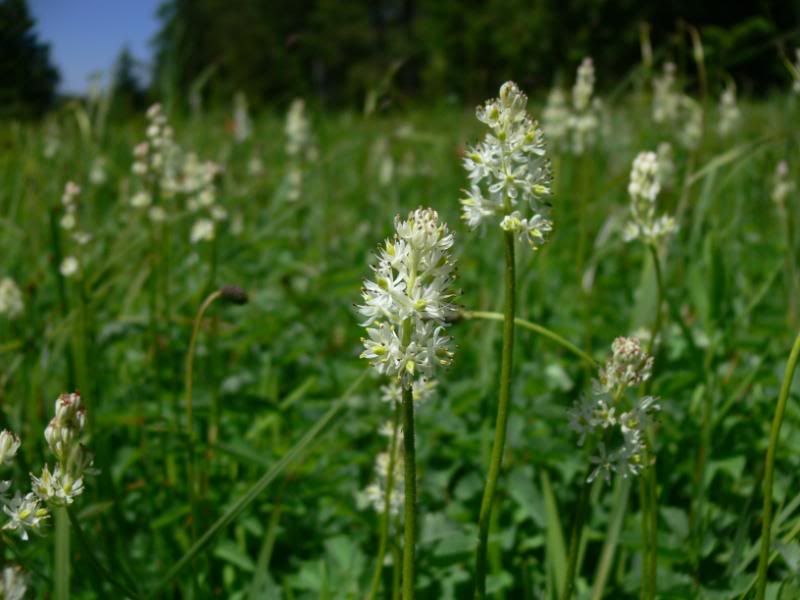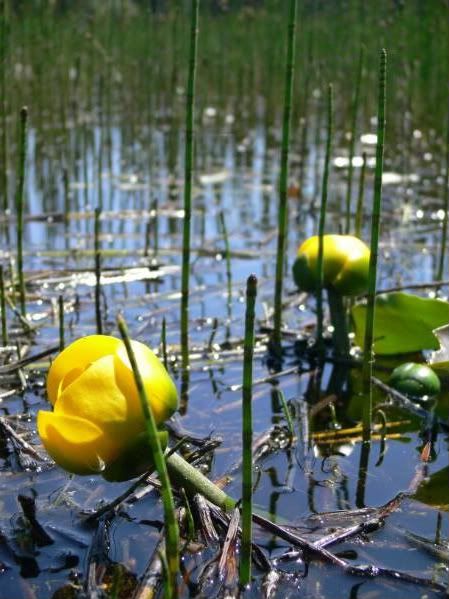Here's a chronological of my primary project in our new yard over the past year. In case you haven't heard from me in a while, this is why.
2008-08-22 When we moved in, the previous owners left us a topped Liquidamber for some reason. Right where the greenhouse goes. Thanks.
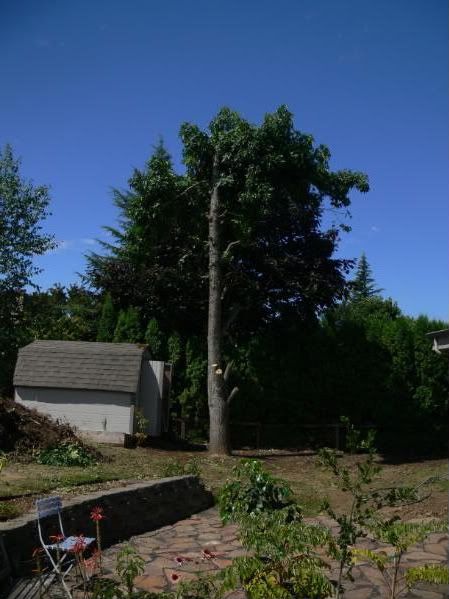
2008-08-23 After the tree came down. We also had a ton of other random projects including getting the vegi garden up for Spring 2009, and moving tons of rock. See the concrete wall in the picture, it's getting moved two pictures down.
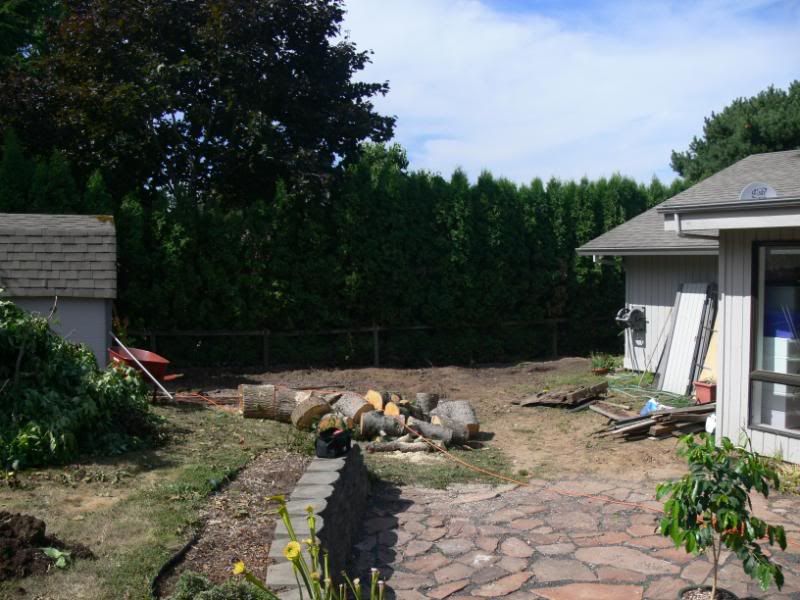
2008-08-24 Move the shed. Ugh!
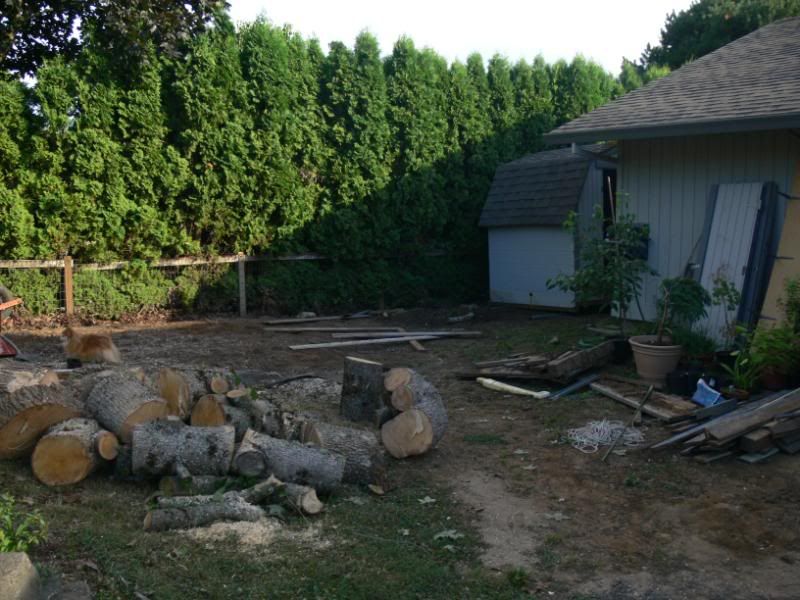
2009-03-25 Ok, there are 7 months btwn these pictures. Please note that the Awful Arborvitae (Thuja awfullus ssp disgustingii) are gone and in their place a 4 ft concrete retaining wall. Total weight 7 tons. Yah. That was me and Lisa, for 7 months. Greenhouse outline shown.

2009-04-03 So many roots...
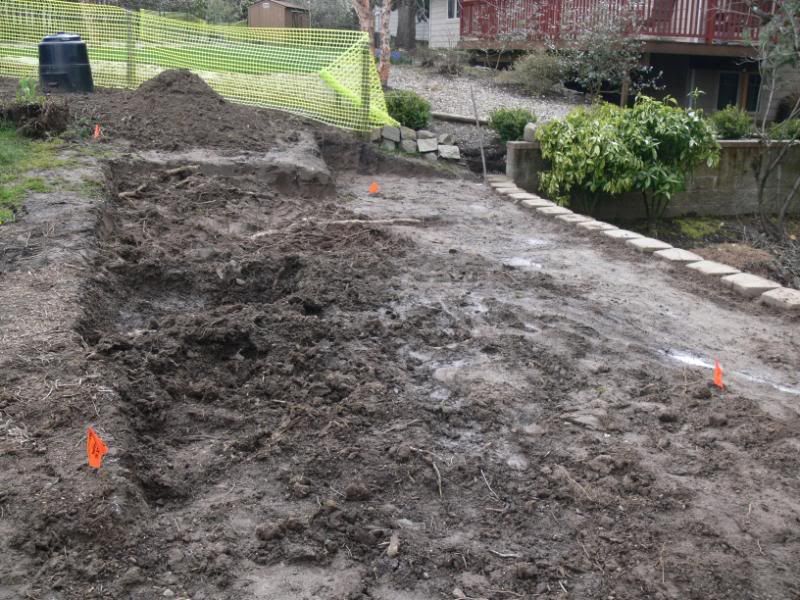
2009-04-25 SO Many Roots!
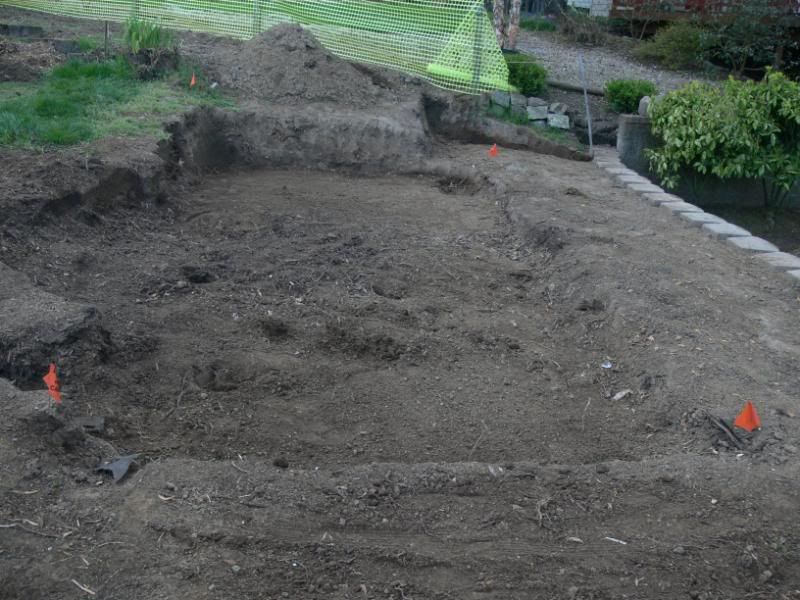
2009-04-26 Cleaned up, finally.
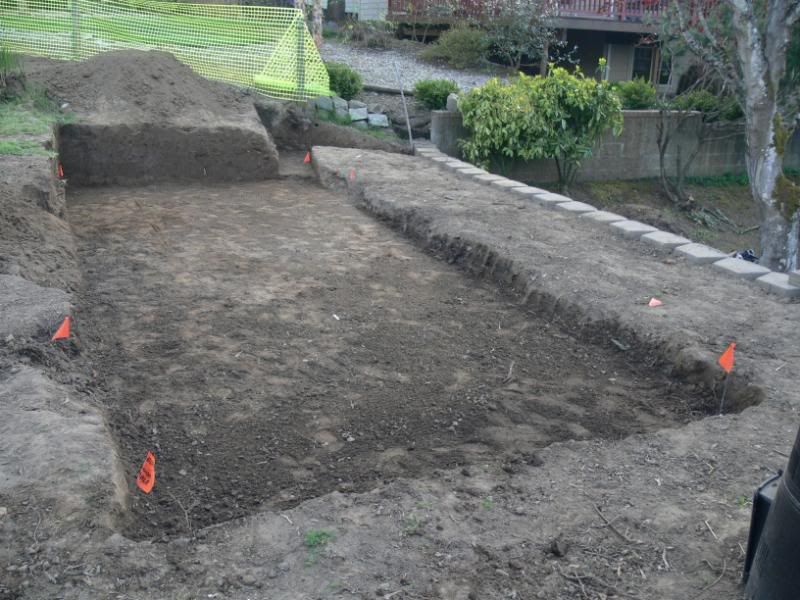
2009-05-17 Cleaned up, really. With the help of Egyptian leveling technology, I can guarantee the overall accuracy to within 0.1 remen of error.
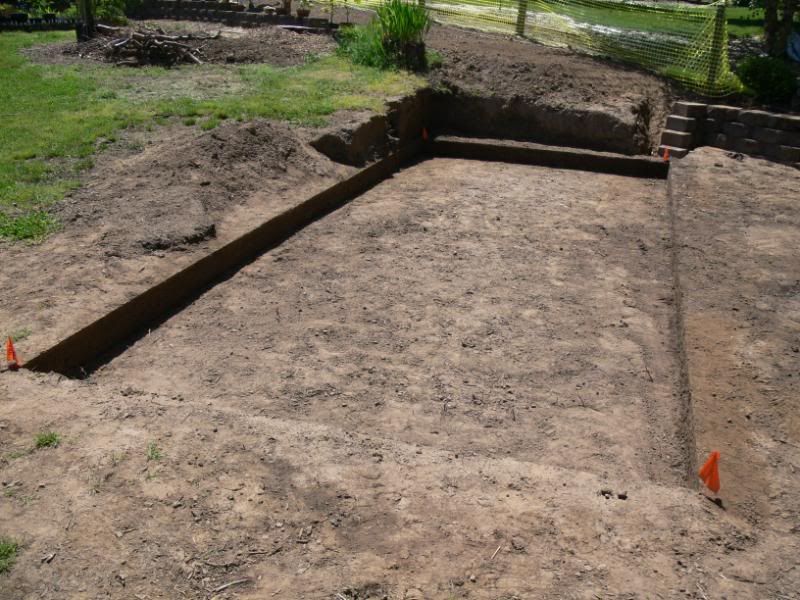
2009-05-31 With foundation frame. The exterior of the mold is 22ft by 9ft, making the interior of the GH about 21ft by 8ft. 22X9 is an area of 198 sq ft. A permit is required for any project over 200sq ft ;-) which is how we decided on the dimensions.
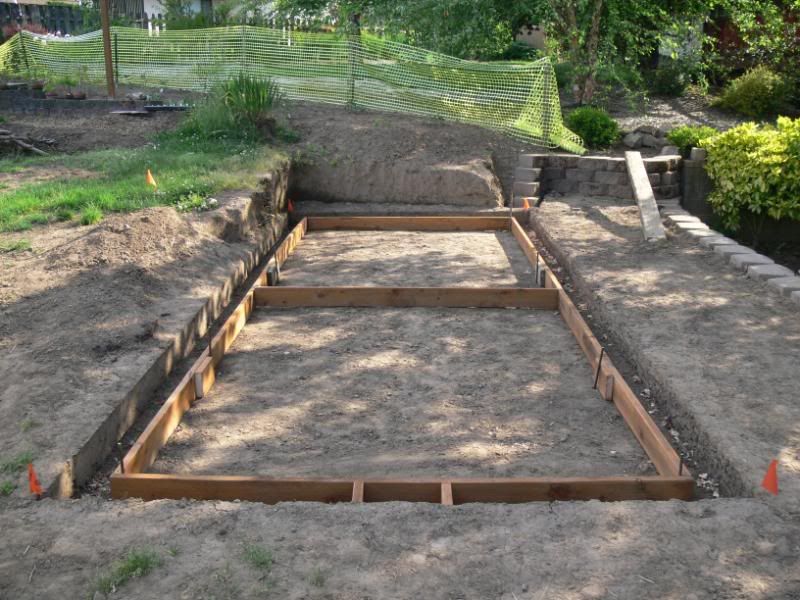
2009-06-06 Pouring Foundation. With the 4 of us, it only took 1h30m to mix and pour the 30 bags of concrete. Thanks Terry and Emily!
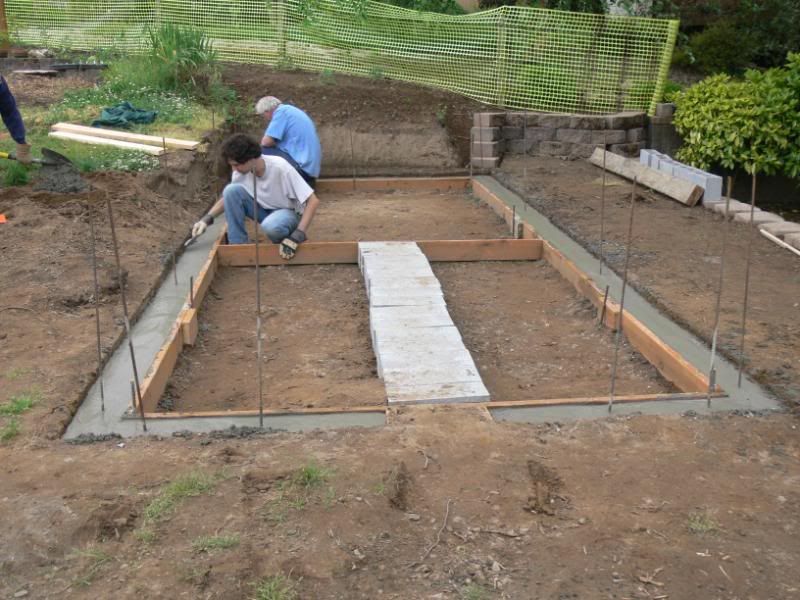
2009-06-23 After the foundation cured, a row a day.

2009-06-24 A row a day. So tired of lifting blocks!
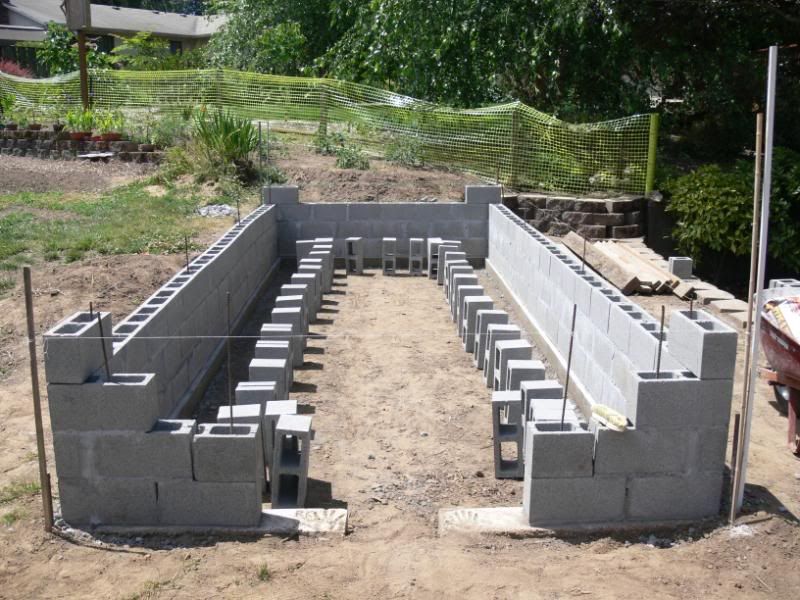
2009-06-25 Almost there....
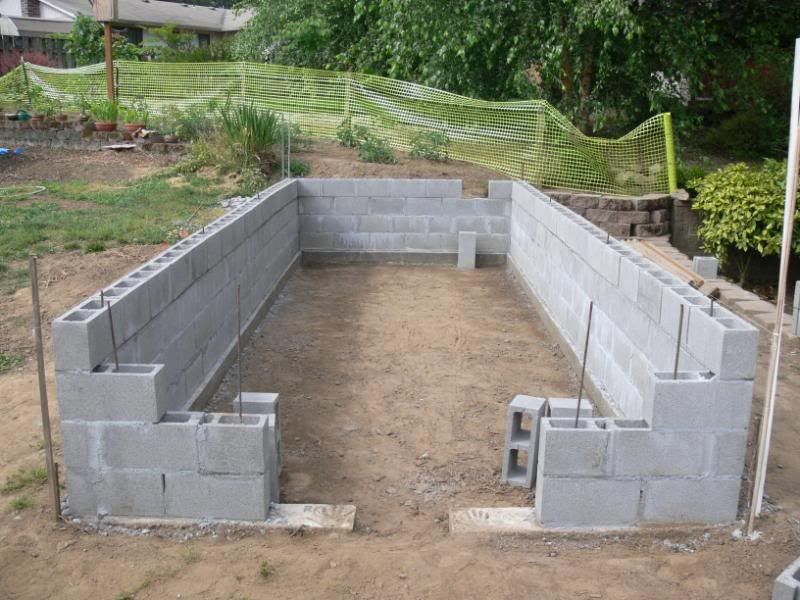
2009-06-28 Done! Take that, 220 blocks and 8 bags of morter. I'll stucco the facade next spring.
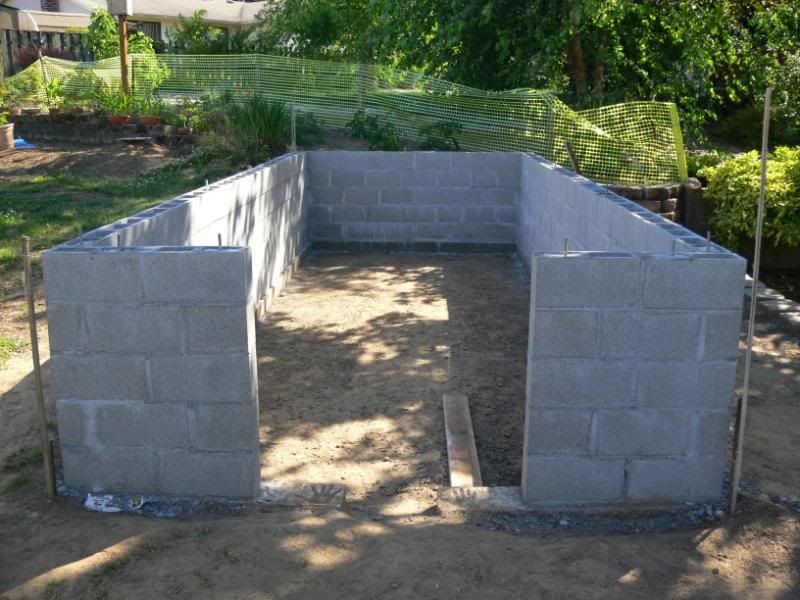
2009-07-03 Framing marathon. Thanks Dad! I'd still be framing cluelessly without you there.
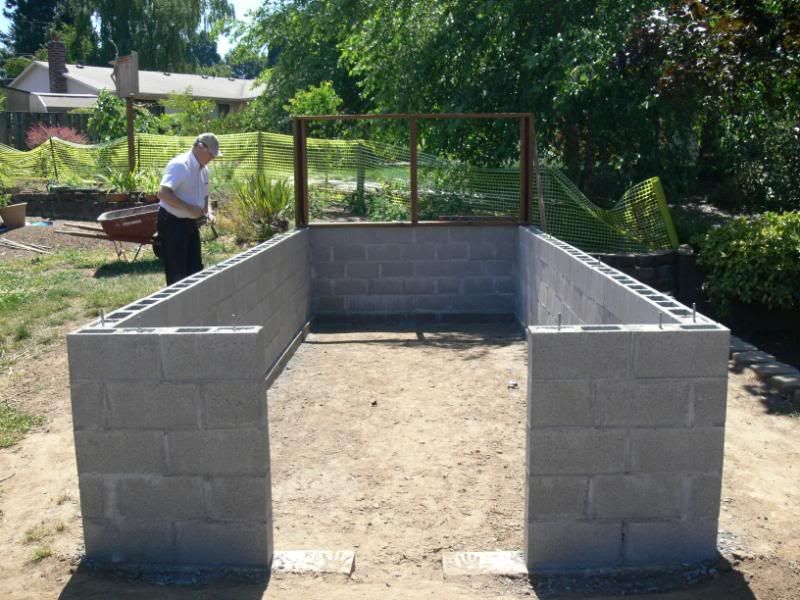
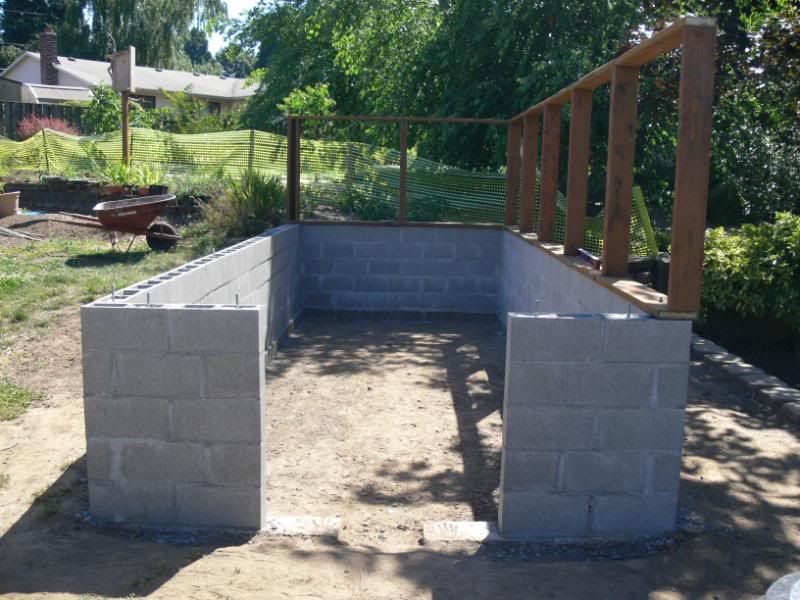

2009-07-04 Framing Marathon!
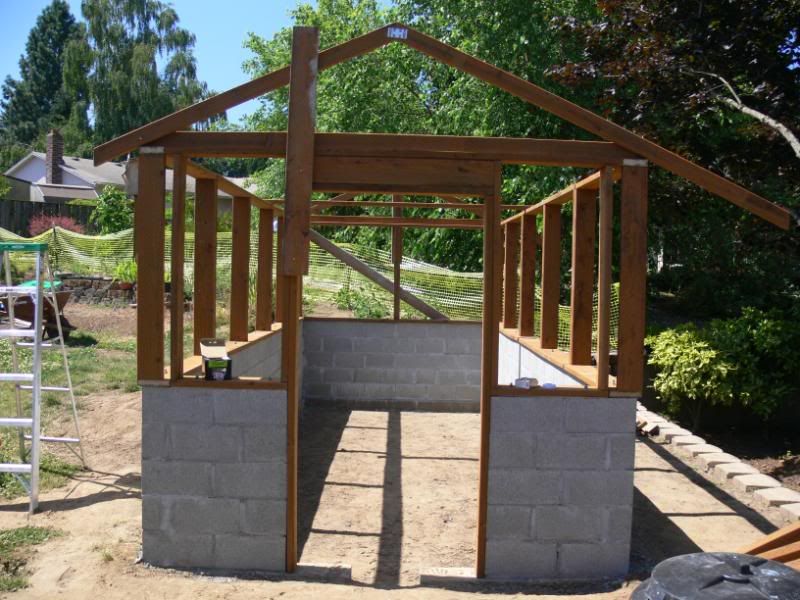
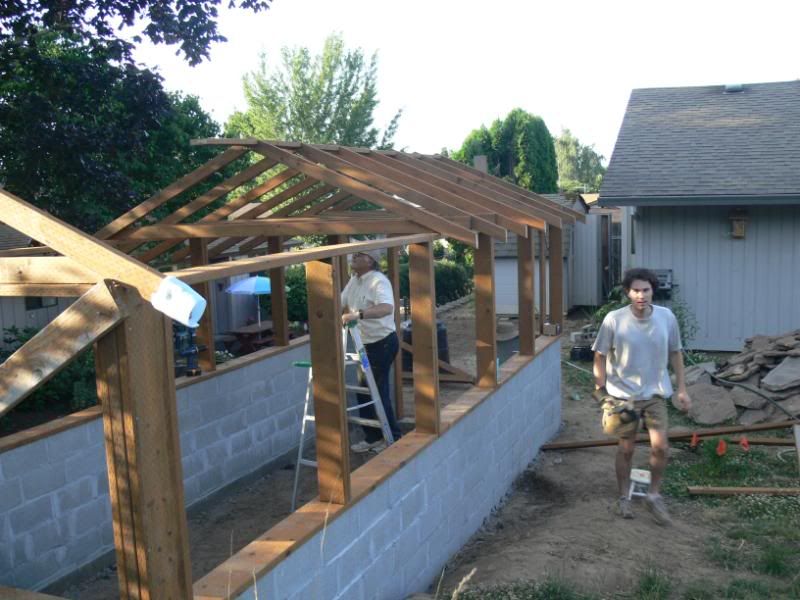
2009-07-05 FRAMING Marathon!!! Both of us were exhausted by the end!
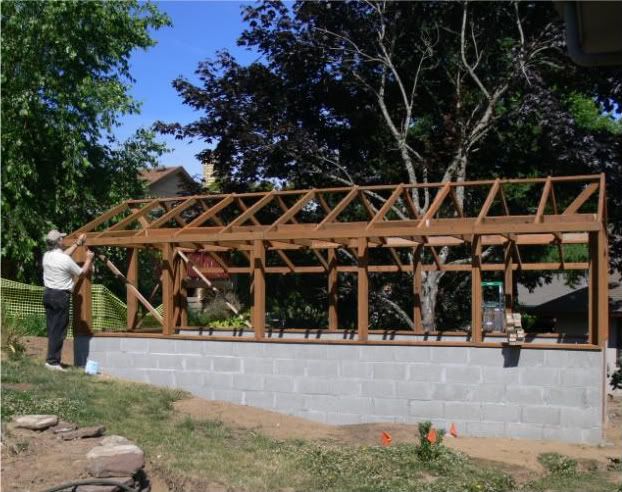

One Roof Panel up. Hazz-ray. Notice that the right hand side overhang is substantial. This will provide an outdoor rain protector for truly hardy alpine and rock garden type plants.
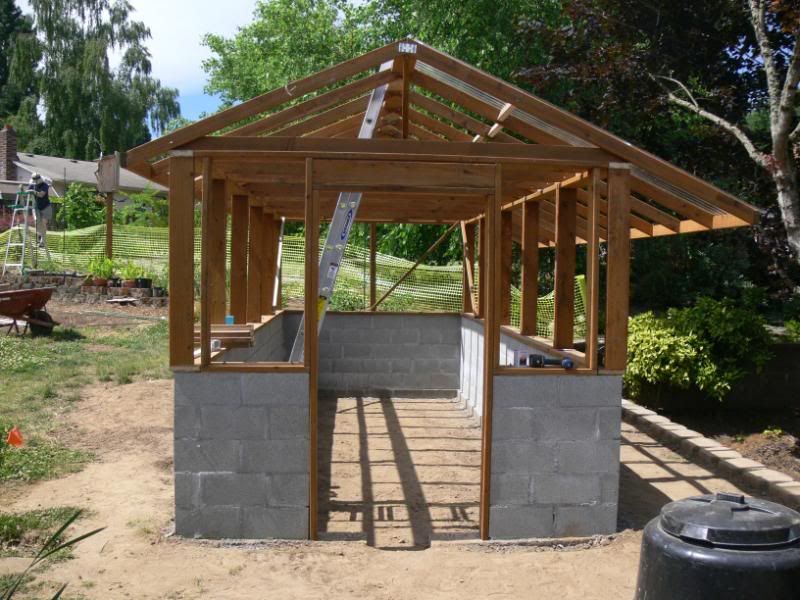
2009-07-07 Now there are 8 roof panels up. Up the ladder, down the ladder, D.C. al coda.
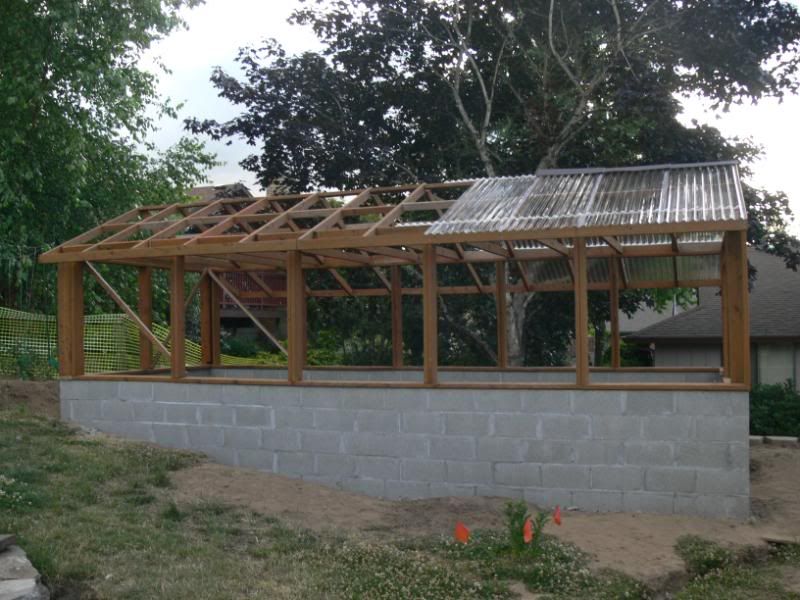
2009-07-11 Oh, my various gods: It's done!
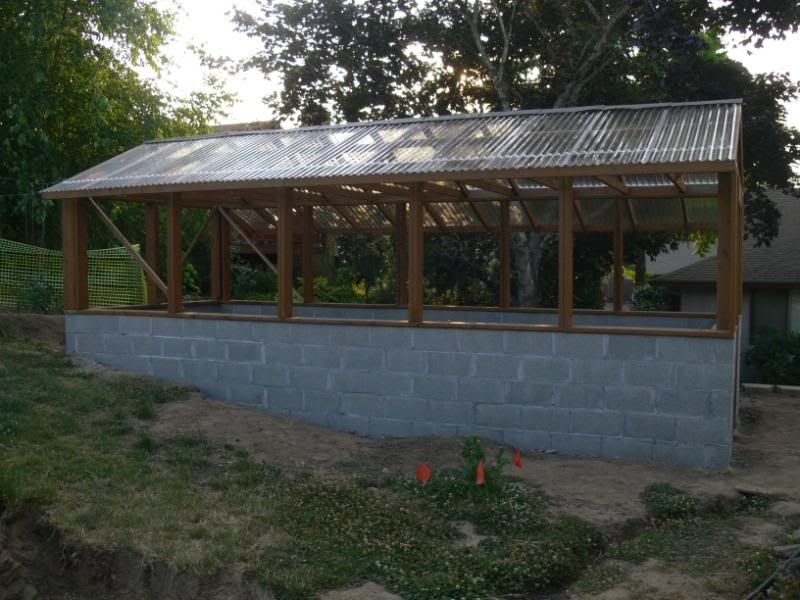
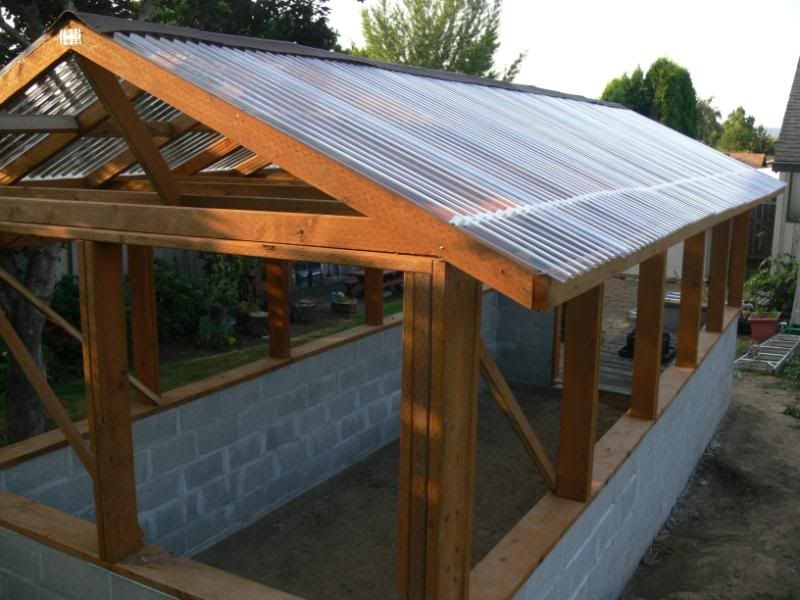
Here's my first plant bench and the first plants in the GH. The frame is 2x4's, but the top is part of an old fence from my neighbor's yard.

Here're the first plants in the GH: Pygmy Drosera (this is D. callistos). A single hail ball could destroy it! ;-) Lucky it's protected by a fancy GH.
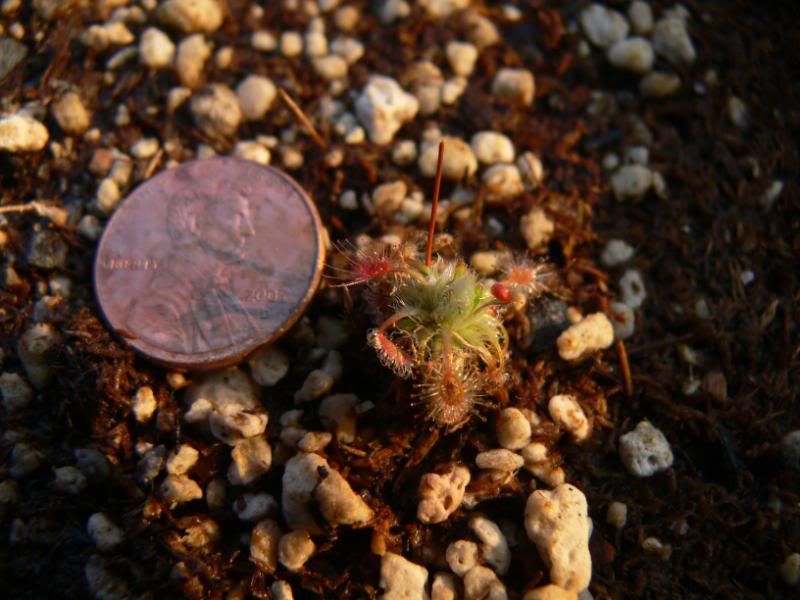
This week I will caulk all the cracks, do the irrigation and get another bench or two built. By winter, we'll hard wire it for a heater and I'll seal it with double walled poly. It'll get heated to 35F, so it's really more of a cold frame over the winter. All of my true tropicals can live in the house's sunroom.
In the next few years, I'll get 4X4 windows to replace the plastic. If you have any that you want to donate, let me know :-)
This GH is primarily for my various obsessions that aren't quite hardy sometimes: South African plants (in particular Proteaceae), semi-hardy carnivorous plants, assorted seedlings for the yard, Vireya Rhododendrons, bonsai, hardy orchid seedlings, alpines and rock garden plants that don't like the wet winter, and anything else that catches my eye. I'll start some vegi's in there in early Spring, probably, if I have space.

